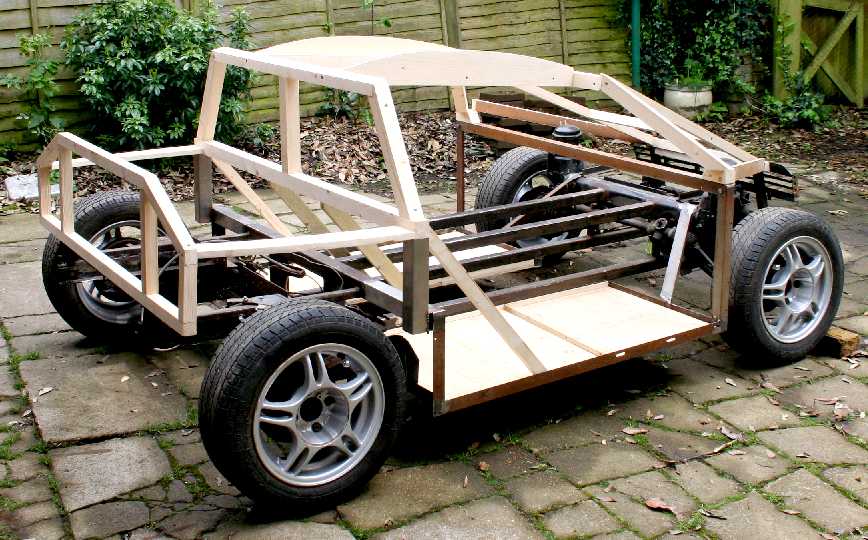“Software defined vehicle”
💀
our cars have long been software defined. not just a high level software that they put now. but for a long time there has been chip that is responsible for a LOT of stuff, brakes, steering, abs, traction control etc.
Roses are red, hope this is never real
Your brake pedal has now become your steering wheelDefault state is a hard left, flooring it is a hard right, precisely 50% is straight.
Never let go, or you dive left into oncoming traffic lol
It should be said, though, that brakes and steering are still possible via plain mechanics in hopefully all cars. There’s usually electronics to amplify it, meaning your car brakes harder and steers more easily without you putting in full force, but if that fails, it should degrade gracefully.
Had that happen in my old car a few years ago, that the whole engine and everything just turned off while I was rolling downhill. It was a bit of a panic moment, when suddenly the brake pedal and steering wheel took a lot more force to move, but the instinct reaction to just put in that force worked.
I don’t drive but if the engine is off while the clutch is
disengagedengaged wouldn’t that produce a braking effect. Maybe not enough to stop the roll on a slope but enough that normal foot braking would stop the vehicle?You underestimate what “downhill” can do to that equation. I recommend looking at some roads in WV like route 60 to the east of Gauley Bridge, Mount Alpha Road in Kanawha City, or Goff Mountain road that connects Institute to Cross Lanes, on the end near Institute. That last one has a hill steep enough that just sitting in neutral will get you up to 60MPH before you reach the bottom without heavy breaking.
I used to claim my state didn’t have any bad drivers, because there are too many places where if you fuck up you’re going to fall a.couple of stories and get impaled on a tree.
First to clarify, you mean with the clutch pedal “out.” Pushing the pedal down actually disengages the clutch, ie forcing the plates apart to disconnect the engine from the transmission.
In a gasoline powered car that is in gear, yes there is a braking effect. Diesel engines don’t, which is why semi trucks have a thing called a Jake Brake.
Also, depending on what went wrong with your engine/why it is shut down, you may not want to choose to do this.
Yeah, in a manual car with the clutch disengaged and a gear engaged (and obviously the gas pedal disengaged), it should brake a little bit on its own. Many people don’t even use their parking brake, unless they’re parking on a slope, because that braking effect is good enough.
But I don’t think, you’d even need this braking effect. You can apply a lot of force to that brake pedal, if needed. I was taught, that if I need to brake for an emergency, I should kick, with full-force, the brake pedal and the clutch.
Not entirely sure, why that’s advised, maybe to avoid having the engine stutter or shut off, but I assume you couldn’t raise the brake amplification much more than that anyways (especially not without the driver being lifted off their seat and losing control).
The amplification is more of a comfort feature, since it means you barely need to move your feet in every-day-traffic.
Its pretty exciting too. With EVs it makes even more sense and hopefully means we can see more competition in the market since it means more modular vehicles (imagine if every steering column could work for every drive train for example).
You’ve been able to do that for ages. Granted it’s pretty much only with tyres and windscreen wipers for now, but it’s a start!
Yep, simplyfy, standardize, modularize, repeat, and we might actually get affordable cars (or anything really) again.
Its not something encumbant car manufacturing would be trying to push for outside of their own production lines though.
The term “SDV” is pretty much an industry standard in automotive engineering
Is it just the antonym to fly-by-wire?
the time has come

This is the way
Unironically dream car

Doors are bloat
Chairs are bloat
Headlights are bloat
Side mirrors are bloat
Engines are bloat
All you need is frame, steering wheel, and wheels for a GNU/Car lightweight edition.
Gives a whole new meaning to Kernel Panic.
And “driver crash”
gives no meaning to full metal panic.
As someone who’s working with Elektrobit and software produced by them, both are hot, steaming garbage. I’m not envying anyone who swallows this bait. Mildly put, Elektrobit underdelivers both on time and quality of their commitments. I hope at least they’re cheap but I don’t have visibility in that area.
And so what?
Many things are based on Linux that does not mean anything for the customer, because those end up being heavly modified version being able to run just on this specific chip and only support vendor provided software on top.
My TV runs Android, so Linux kernel, but can I reinstall it and run some Debian with Kodi bypassing all the spyware Android crap? Heck no.
They’re TiVoizing our TVs!
I dont think android counts as Gnu+Linux
The community is Linux not Gnu + Linux. So Google + Linux counts
The article also isn’t about Gnu + Linux
What I am trying to say, partially. But they are not even “Linux”.
I’m sorry but embedded linux has been around for a while now and I’m pretty sure there’s a RHEL for vehicles specifically available too.
Yeah Automotive linux is old news. Ford had a Microsoft system, but I haven’t followed Automotive much after leaving that induatry.
I’m reminded of this:
Nice looks like it’s open source also https://gitlab.com/automotivegradelinux
Yeah, this has been used in automotive for a long time.
Its development was led by the automotive electronics supplier Elektrobit
Any of y’all who’ve ever had to use their software knows that this is not going to go well
I thought I’d be the only lucky one here! 🥹
I want to cast Tresos into the fires of Mt. Doom
That would be great to have linux on my car!!
This is the best summary I could come up with:
One of the more interesting paradigm shifts underway in the automotive industry is the move to software-defined vehicles.
Instead, you’ll find a small number of domain controllers—what the automotive industry is choosing to call “high performance compute” platforms—each responsible for a different set of activities.
You should expect to see this approach more often as automakers develop new platforms, and there are already examples from Audi, BMW, McLaren, and Porsche on the road or arriving shortly.
“The beauty of our concept is that you don’t even need to safety-qualify Linux itself,” said Moritz Neukirchner, a senior director at Elektrobit overseeing SDVs.
“So in the end, since we take Linux out of the certification path and make it usable in a safety-related context, we don’t have any problems in keeping up to speed with the developer community,” he explained.
And this is the kind of challenge that you’re being put up to if you want to participate in that speed of innovation of an open source community as rich as that of Linux and now want to combine this with safety-related applications," Neukirchner said.
The original article contains 688 words, the summary contains 183 words. Saved 73%. I’m a bot and I’m open source!
deleted by creator
While I agree with the sentiment, I have accepted that the simple way to make “things” work now is to leverage the cheap computing that is ubiquitous. That headunit is likely now built on a SoC or some embedded OS and is easier and cheaper because of it.
Functionally we need regulations and safeguards in place that maintain the accountability for making the choice to use and build an OS as a life safety device that also serves Bluetooth audio. If the cost of supporting it, or failing to properly develop it, then perhaps the choice to make it dumb will become more adopted. Other economic forces are more likely to play out, but it’s a possibility that we can reinforce by what we buy and signal.
The safety-critical features tend to be on systems separate from the infotainment ones, in part because it’s a lot easier to safety-certify something simpler and more dedicated to automotive tasks. You won’t die if your AC and Taylor Swift stop working.
Yes, you want an OS in your car.
The infotainment system is not the only computing system in your car.
In a car with numerous driver aids, a 15 inch touchscreen, 40 cameras and a laser guided cruise missile, yes I agree, you want an OS.
I personally want a car where the “smartest” aspect is the fuel delivery system. Power steering, brakes, etc can all be done mechanically. I’m not a fan of advanced assists as I’ve seen far, FAR too many people become reliant on them and turn into lazy, dangerous drivers. I strongly believe that all base models should still be sold with zero assists, mainly to encourage people to actually act like they’re licensed to operate a piece of heavy equipment in a public space.
I agree that half-assed ADAS can be more dangerous than none at all.
Not buying it. The colossal attack surface of a giant monolithic kernel should not be controlling an automobile. No offense to Linux or anyone who works on it, it’s great, you just can’t rely on it with your life. It was never designed to be.
then remove that “colossal attack surface” by compiling a custom kernel and utilities that only includes the features the product needs. create a system tuned to the exact product to make it extremely reliable. almost everything electronic you see in commercial use is Linux because of this very fact.
Many medical devices run Linux.
Toyota, Tesla, Audi, Mercedes, and Hyundai vehicles use Linux.
you certainly can rely on it for your life and nearly every electronic device you use will use some derivative of it.
Can you please name at least one product that directly uses and relies on Linux for a safety-critical system? Those vehicles only use Linux for the ICE and not the ECU. And those medical devices are not directly controlling patient-facing instruments via Linux as far as I know.
I’ll gladly provide 2 examples that I know of :
The entirety of the Tesla OS is based on Linux, meaning that their proprietary autopilot program running on their OS is directly dependent on the Linux kernel for its core functionality.
- Tesla has been working to upstream support for their Full Self-Driving (FSD) SoC into the mainline Linux kernel.
- Tesla’s Autopilot HW3 computer is running Linux kernel 4.14.
- Tesla has been enabling the Tesla FSD SoC for the upstream Linux kernel over the past year.
Lastly, NASA’s Mars helicopter.
You can compile a small custom kernel with just the needed drivers. Also an LTS kernel. This is likely exaggerated
Yes but that small kernel is still pretty massive and all running at ring0
For sure. But it works. This is the point.
I am a total redoxOS fanboy but I have not even got that thing to launch in a FOSS VM.
There’s nothing to buy, Linux is already in ECUs on the road. Elektrobit is just developing yet another option.
Do you have any proof for that claim?
What you need is redundancy
Hurd durr /s
I come from a MCU background and feel the same way. Linux kernel is for consumer level stuff. For serious machinery, I choose a real-time OS like FreeaRTOS. Less code, and more low level code makes it easier to review, maintain, and have less chance to break.
Ive been seeing Linux take a more controler of controllers kind of role. Handling updates, networking, complex logic, logging, metric, etc.
It’ll be interesting to see where it goes. On one hand ASICs, FPGAs, and microcontroller are getting easier than ever to program, its still not as easier as having a full Linux OS to build on.




















